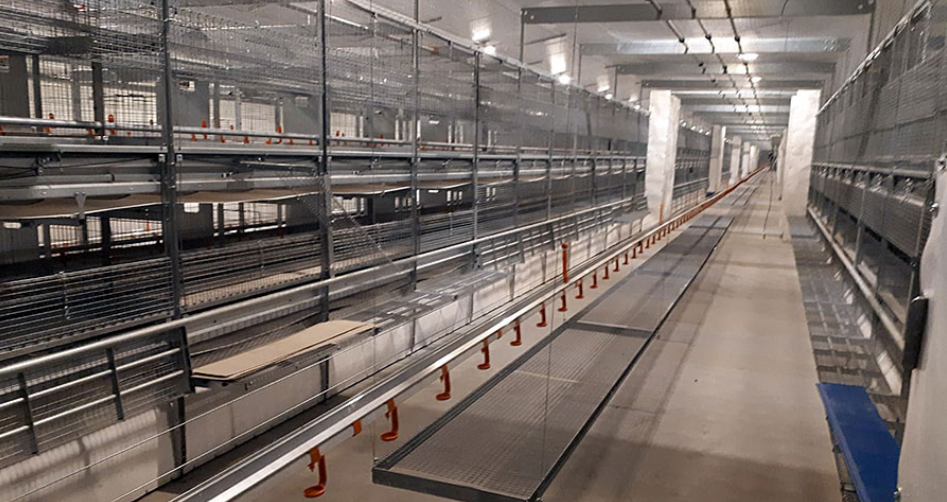



Pullet rearing in a “broiler house”
German consumers demand more and more organic eggs. While 6.2 % of bird places were for organic egg production in 2010, this figure had nearly doubled by the end of November 2018, at 11.1 %. Since sales volumes for organic eggs are expected to remain stable or even increase in the long term, and because both layers and pullets should be housed under organic conditions, the Korf-Pohlmeyer family from Hohenkörben (district County of Bentheim in Northern Germany) decided to add an organic rearing house to their farm. The most important component of the new welfare barn is the Natura Primus rearing aviary from Big Dutchman.
Originally, the new building was planned and approved as a broiler house. However, since German emission legislation does not make a difference between broilers and layers, and because surface area and building fit the new requirements, it was quite easily possible to erect a pullet rearing unit instead.
The result: a total of 29,800 pullets live in the 120 metres long barn today, in seven strictly separated groups. An eleven-metre wide winter garden and a range outside at the long side of the “broiler house” are new additions. Both in the winter garden and on the range, the pullets are separated into the same groups.

Pullet rearing with Natura Primus
The Natura Primus aviary was designed for pullet rearing and successfully helps to train the young hens, who need to learn how to fly, hop and jump. The reason is obvious: If the pullets know their way around the rearing aviary, their move from this “kindergarten” to the laying aviary will be no problem. The birds will have an easy start into the laying phase, including a great laying performance.

The Korf-Pohlmeyer family commissioned Big Dutchman to install an aviary row of the three-tier system along both sides of the barn. A wire mesh platform in the centre can be adjusted in height and thus grows with the chicks. An additional drinker line on top of this platform animates the birds to jump and fly.
Moreover, the Korf-Pohlmeyer family had hinged-type approach gratings mounted at the lower system row at distances of 1.20 metres. These gratings are a benefit for both humans and birds: farmers have easier access to the aviary, which facilitates daily work in the barn. The gratings are even counted as usable area. For the pullets, the gratings provide additional space to romp about.
It all begins in the start tier: the chicks spend the first ten days in the central tier, then 50 % of the birds are moved into the lower tier. Between week 3 and 4, the start tiers are opened.
Welfare aviary system
Natura Primus is one of many members of the Natura product family, which was started nearly three decades ago. Whether farmers are looking for pullet rearing, egg production in a traditional barn or in a mobile housing system, or for systems for barn, free range or organic egg production: the poultry equipment supplier from Vechta has equipped more than 100 million hen places with this aviary system, which is considered to be especially animal-friendly. Experienced experts see the Natura aviaries as proof that animal welfare, sustainability and success are not mutually exclusive.
Images published courtesy of the company Ter Heerdt.









